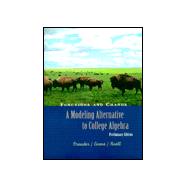| Preface | xi | ||||
| Prologue | 1 | (434) | |||
|
1 | (1) | |||
|
2 | (1) | |||
|
3 | (1) | |||
|
4 | (1) | |||
|
5 | (2) | |||
|
7 | (1) | |||
|
8 | (9) | |||
|
15 | (2) | |||
|
17 | (54) | |||
|
17 | (9) | |||
|
17 | (1) | |||
|
18 | (8) | |||
|
26 | (11) | |||
|
26 | (1) | |||
|
26 | (1) | |||
|
27 | (2) | |||
|
29 | (8) | |||
|
37 | (17) | |||
|
37 | (3) | |||
|
40 | (2) | |||
|
42 | (2) | |||
|
44 | (10) | |||
|
54 | (12) | |||
|
54 | (3) | |||
|
57 | (3) | |||
|
60 | (6) | |||
|
66 | (5) | |||
|
71 | (78) | |||
|
71 | (15) | |||
|
71 | (5) | |||
|
76 | (10) | |||
|
86 | (20) | |||
|
86 | (1) | |||
|
86 | (1) | |||
|
87 | (1) | |||
|
88 | (5) | |||
|
93 | (13) | |||
|
106 | (13) | |||
|
106 | (2) | |||
|
108 | (11) | |||
|
119 | (13) | |||
|
119 | (1) | |||
|
120 | (12) | |||
|
132 | (13) | |||
|
132 | (4) | |||
|
136 | (9) | |||
|
145 | (4) | |||
|
149 | (60) | |||
|
149 | (9) | |||
|
149 | (2) | |||
|
151 | (1) | |||
|
152 | (6) | |||
|
158 | (13) | |||
|
158 | (2) | |||
|
160 | (3) | |||
|
163 | (8) | |||
|
171 | (13) | |||
|
171 | (1) | |||
|
172 | (3) | |||
|
175 | (9) | |||
|
184 | (12) | |||
|
184 | (2) | |||
|
186 | (10) | |||
|
196 | (9) | |||
|
196 | (4) | |||
|
200 | (5) | |||
|
205 | (4) | |||
|
209 | (56) | |||
|
209 | (14) | |||
|
209 | (1) | |||
|
210 | (3) | |||
|
213 | (3) | |||
|
216 | (2) | |||
|
218 | (5) | |||
|
223 | (12) | |||
|
223 | (1) | |||
|
224 | (3) | |||
|
227 | (8) | |||
|
235 | (16) | |||
|
235 | (2) | |||
|
237 | (2) | |||
|
239 | (6) | |||
|
245 | (6) | |||
|
251 | (10) | |||
|
251 | (2) | |||
|
253 | (2) | |||
|
255 | (6) | |||
|
261 | (4) | |||
|
265 | (60) | |||
|
265 | (13) | |||
|
267 | (4) | |||
|
271 | (7) | |||
|
278 | (19) | |||
|
278 | (1) | |||
|
279 | (4) | |||
|
283 | (4) | |||
|
287 | (10) | |||
|
297 | (10) | |||
|
297 | (2) | |||
|
299 | (2) | |||
|
301 | (6) | |||
|
307 | (14) | |||
|
307 | (3) | |||
|
310 | (5) | |||
|
315 | (1) | |||
|
316 | (1) | |||
|
317 | (4) | |||
|
321 | (4) | |||
|
325 | (68) | |||
|
325 | (15) | |||
|
325 | (2) | |||
|
327 | (7) | |||
|
334 | (6) | |||
|
340 | (12) | |||
|
340 | (1) | |||
|
341 | (2) | |||
|
343 | (2) | |||
|
345 | (7) | |||
|
352 | (10) | |||
|
352 | (2) | |||
|
354 | (1) | |||
|
354 | (4) | |||
|
358 | (4) | |||
|
362 | (16) | |||
|
362 | (4) | |||
|
366 | (12) | |||
|
378 | (10) | |||
|
378 | (3) | |||
|
381 | (7) | |||
|
388 | (5) | |||
|
393 | (42) | |||
|
393 | (12) | |||
|
394 | (2) | |||
|
396 | (1) | |||
|
397 | (2) | |||
|
399 | (6) | |||
|
405 | (14) | |||
|
405 | (1) | |||
|
406 | (2) | |||
|
408 | (3) | |||
|
411 | (2) | |||
|
413 | (6) | |||
|
419 | (13) | |||
|
419 | (1) | |||
|
420 | (5) | |||
|
425 | (7) | |||
|
432 | (3) | |||
| Brief Answers to Odd-Numbered Exercises | 435 | (22) | |||
| Index | 457 |








